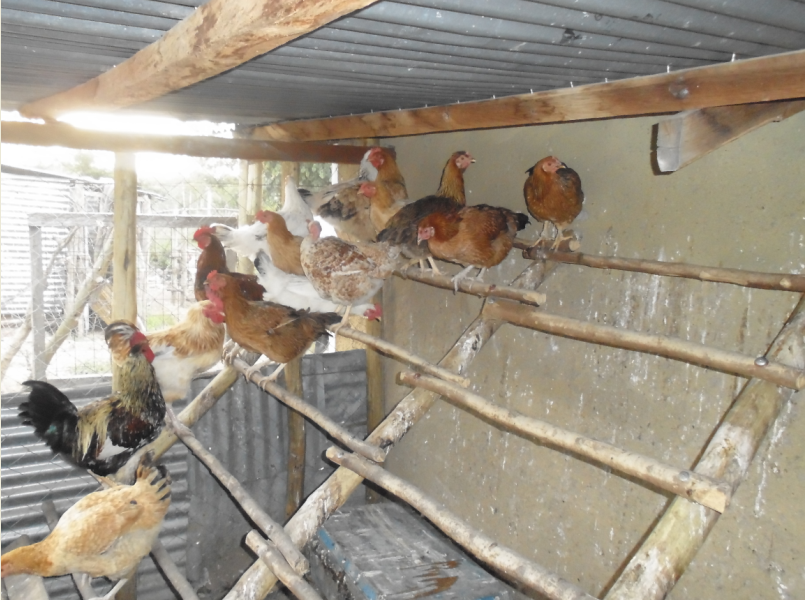One of our key recommendations in our KARI Improved Kienyeji Chicken Farming ManualOne of our key recommendations in our KARI Improved Kienyeji Chicken Farming Manual is that you establish perches when you are building the kienyeji chicken house. This can be fixed on the sides of the poultry house or at the extreme ends of the poultry house. While the chicken has been domesticated for thousands of years, it has never lost the “wild” urge to roost.
The roosting behavior will most likely occur at night since the birds are most likely feeding or scavenging inside the free-range system during the day. The perches are mostly used by the layers when you are rearing the exotic breeds. The broilers of the exotic variety will not need the perches due to their sheer weight. When it comes to the KARI Improved Kienyeji Chicken, the perches are certainly a must have when building the Kienyeji chicken house.
Research into the poultry production methods shows that chicken prefer using perches. This is why it is very important to include these in the housing plan. As we will show later, there are numerous other benefits associated with the use of the perches in the chicken production.
The Benefits of Perches
In the layers, perches help in relieving stress and also prevent untoward behavior such as cannibalism. When the hens are unable to roost at night, they display a frustrated behavior and this can degenerate into other “antisocial” behavior such as fighting. They also help in reducing certain injuries particularly where chicken are overcrowded.
The hens in your brood which are lower in the pecking order will make use of the perches to escape pecking from the aggressive and dominant hens. They will usually take the higher perches in order to keep safe. This ability to escape from the more aggressive hens will reduce incidences of injuries and even fatalities in the brood which are usually inflicted by aggressive pecking on the head and the neck or through cannibalism which occurs when there is severe feather pecking. Perches also help in building stronger and healthier bones in the chicken.
There is another important benefit of the perches which will become apparent when you are cleaning the poultry house. Because the perching keeps the birds off the floor at night, the droppings tend to accumulate in one place under the roost area while the other parts of the kienyeji chicken house remain relatively cleaner. This makes the cleaning process a lot easier.
Standards for installing the perches in the poultry house
It is recommended that you allow at least 15cm or 6 inches of perch space per hen when it comes to installing the perches for the regular hens. When it comes to the KARI improved Kienyeji chicken, allow 18cm or 7 inches of perch space per hen. Allow a horizontal space of up to 30cm between the perches when you are installing them side by side. Give an allowance of 20cm or 8 inches between the perches and the walls. The perches must be round and with smooth edges and not too broad so as to accommodate the chicken feet.
Perches Installation Guidance
If you are planning to use the perches in your poultry production, it is important that these are introduced at an early age when they are still young as late introduction can impair their ability to use them.
The perches should be located in areas of the poultry house where they will not interfere with movement and daily care for the chicken such as the feeding, watering, cleaning, or the gathering of eggs. These should be in the corners or the extreme ends of the house.
The perches should be removable or portable which allows you to remove the manure which has accumulated under them. You can have the lowest perch at least 3 feet above the ground. This reduces the chances of the other chicken on the ground feather-pecking those above the ground. The vertical distance between the perches should not be too large otherwise the chicken might misjudge this during their landings and collide with the perches thus leading to more injuries. Learn more about these on our KARI Improved Kienyeji Chicken Farming Manual that you can now order online in less than 5 minutes.


No comments:
Post a Comment